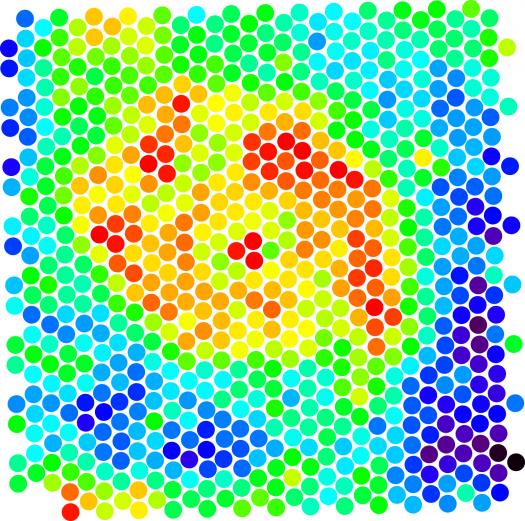Star Formation in the Whirlpool Galaxy (M51)
The Mitchell Spectrograph (formerly known as VIRUS-P) on McDonald Observatory's 2.7-meter Harlan J. Smith Telescope measured the intensity of hydrogen-alpha emission at 246 points across the central region of the Whirlpool Galaxy (M51). The H-alpha emission traces the light from very young stars, and thus is a good indicator of the rate of star formation at each of these locations. Red dots indicate higher levels of star formation; the blue and black dots indicate lower levels of star formation. Credit: G. Blanc/McDonald Obs.






